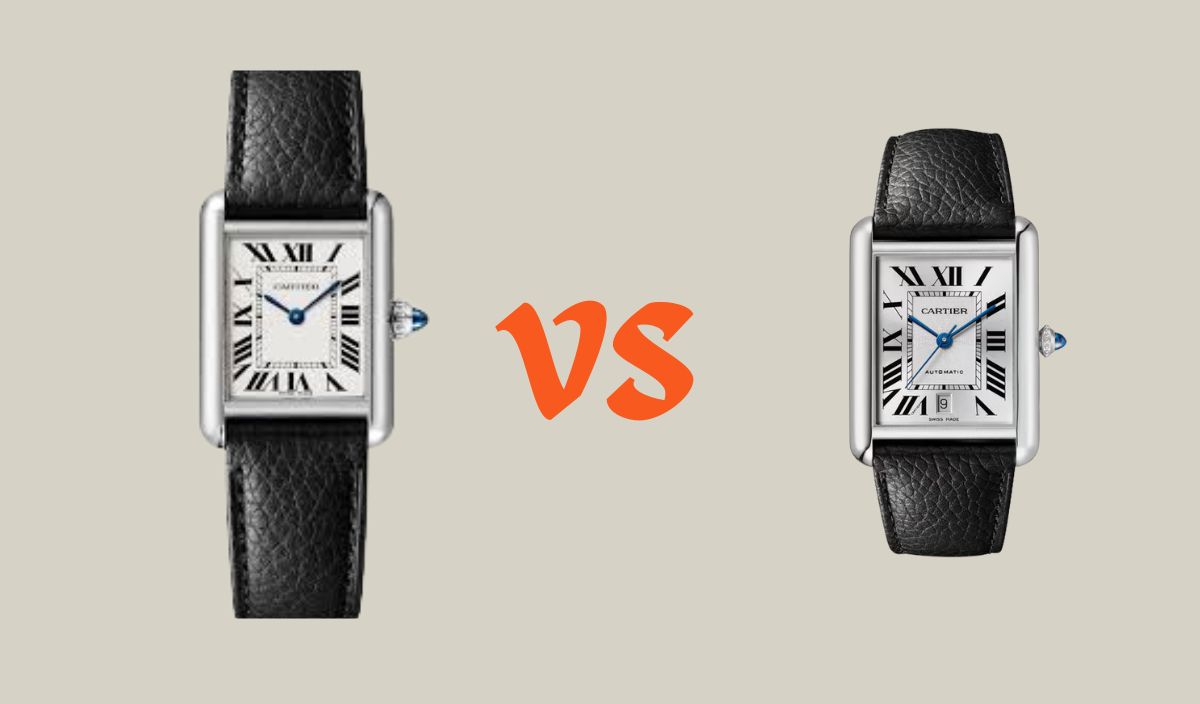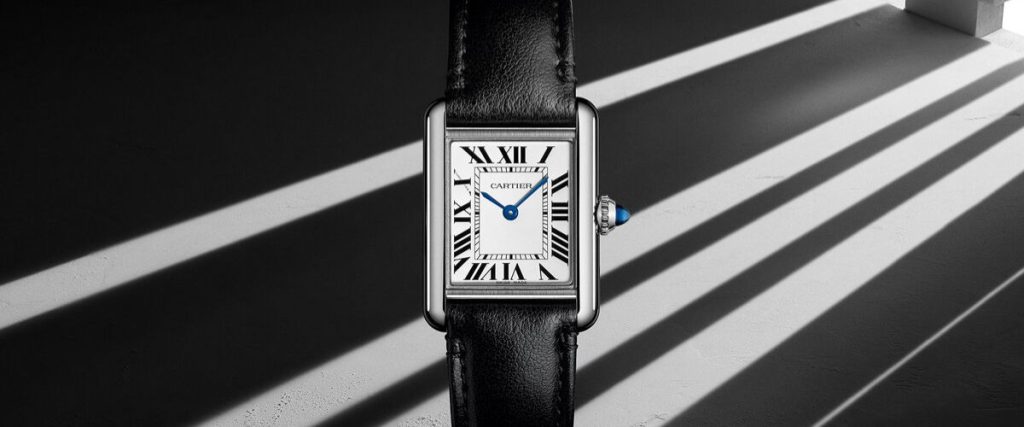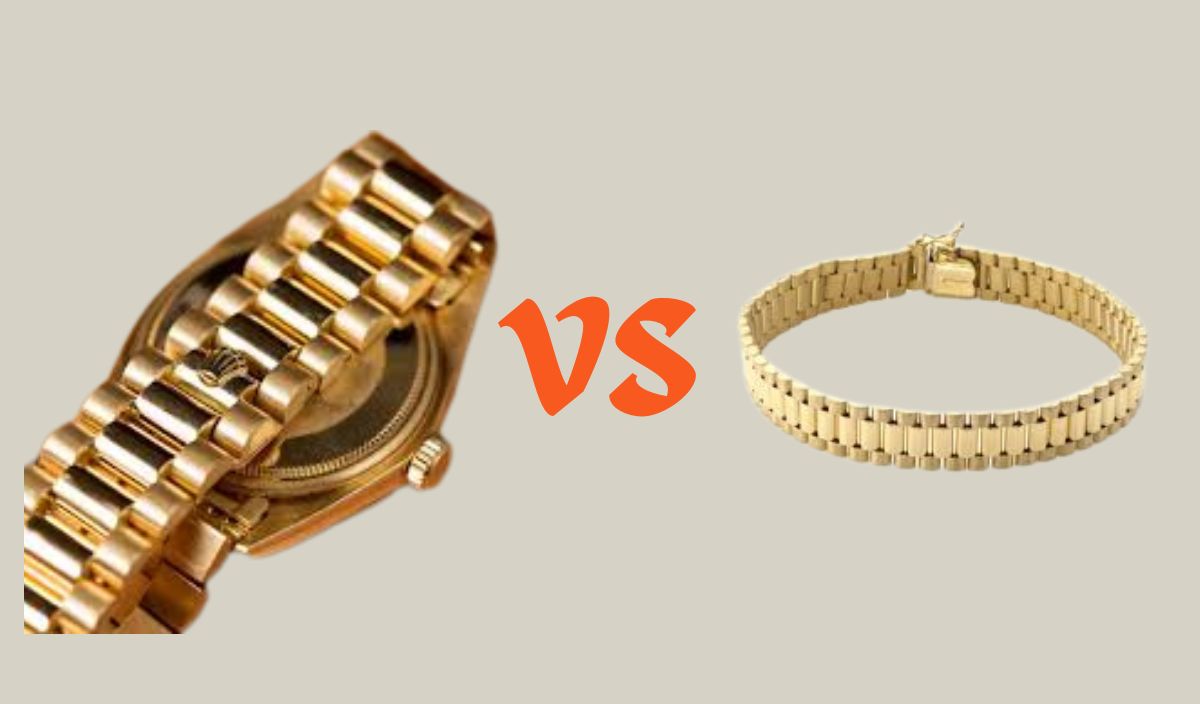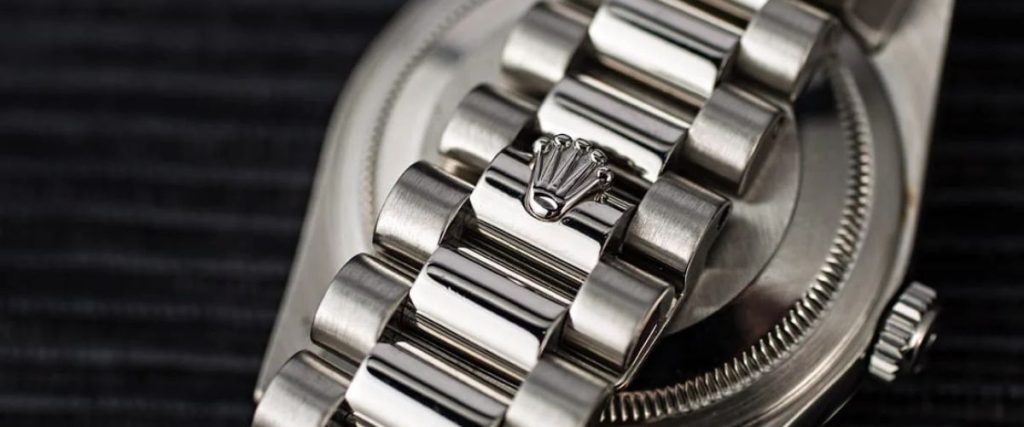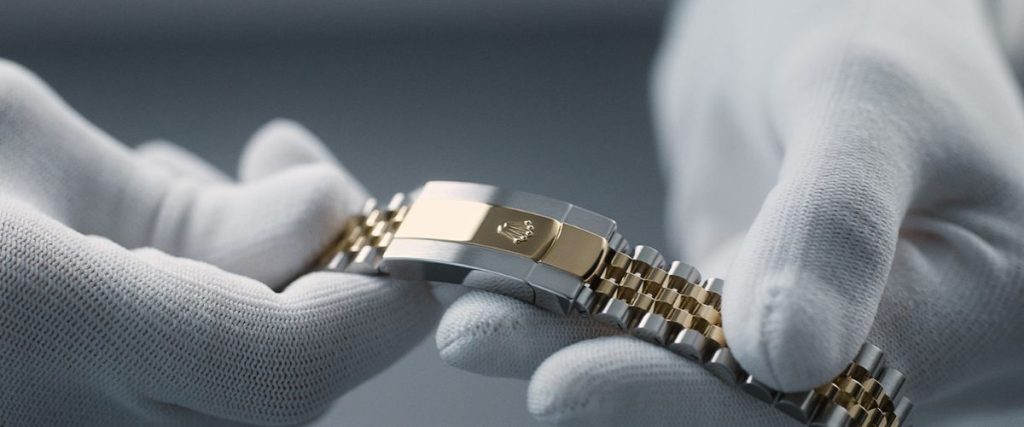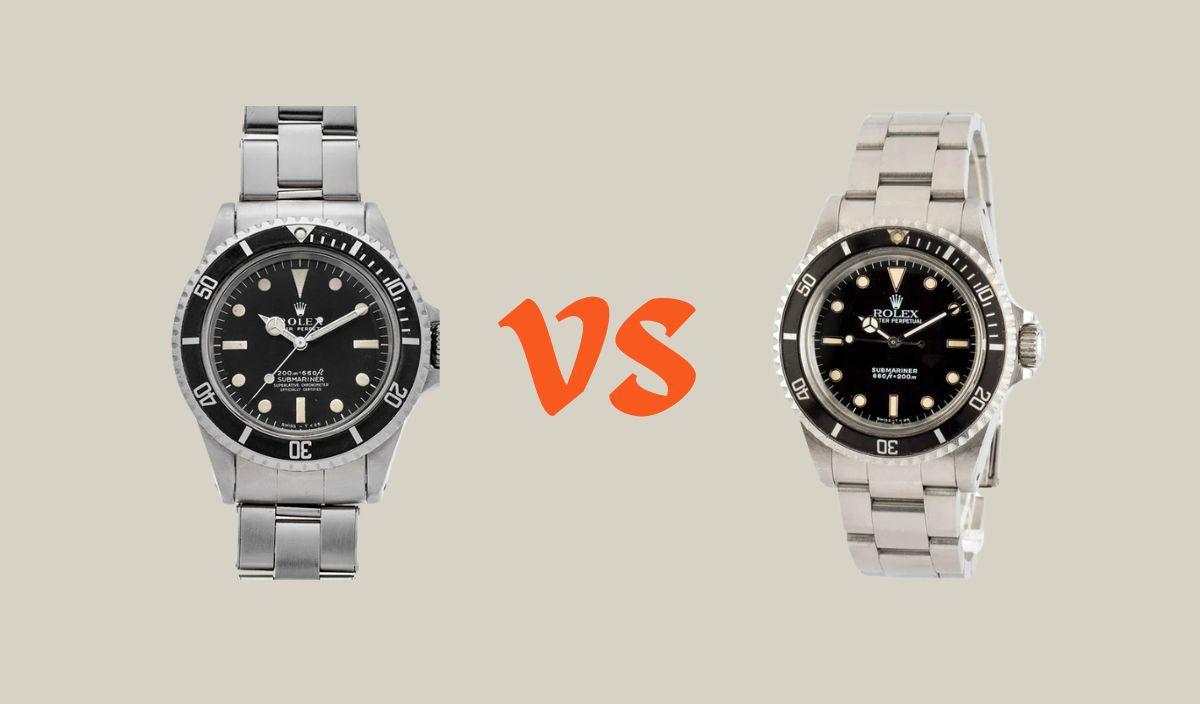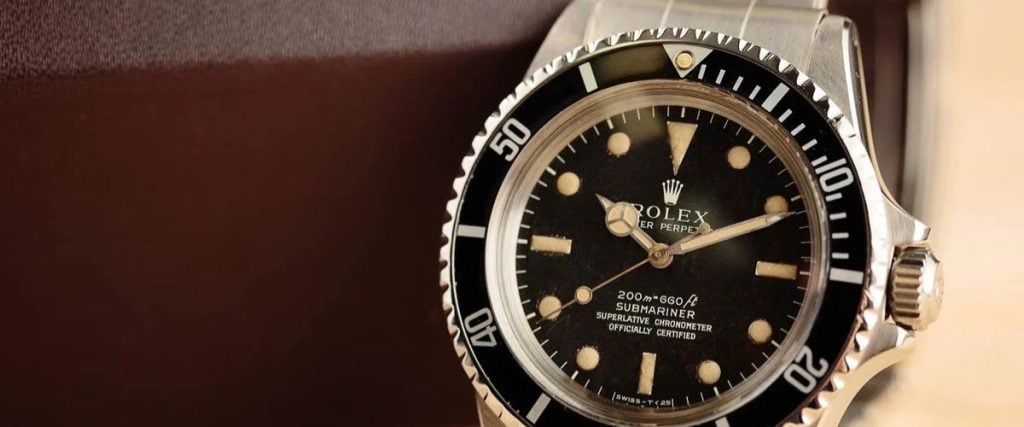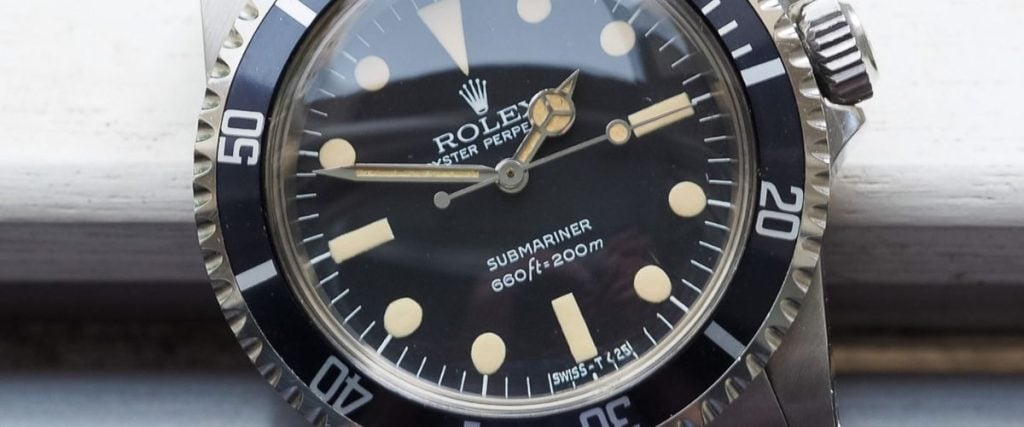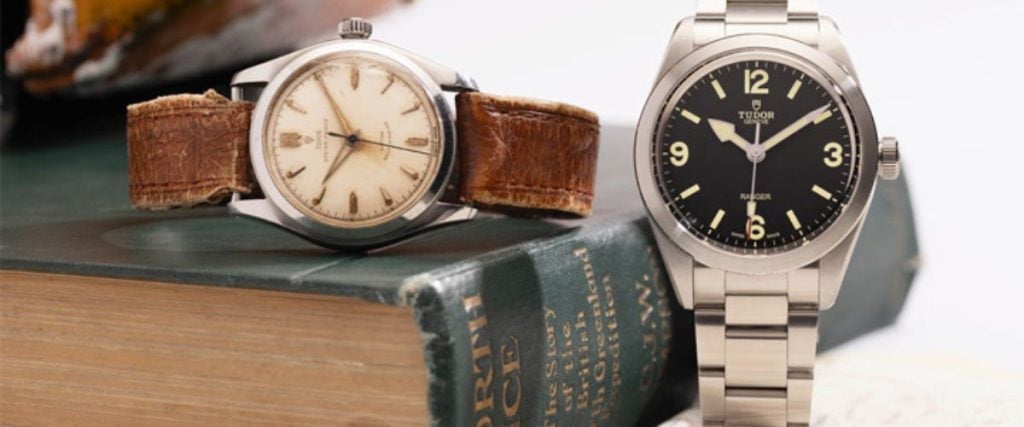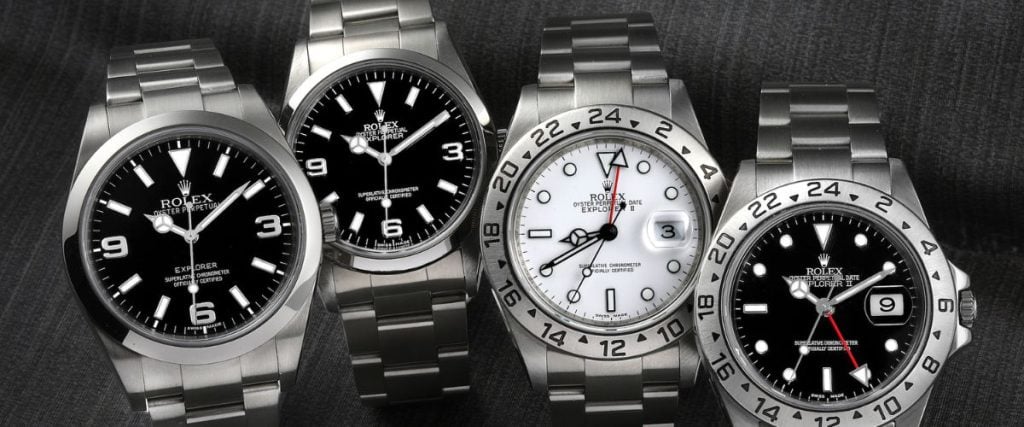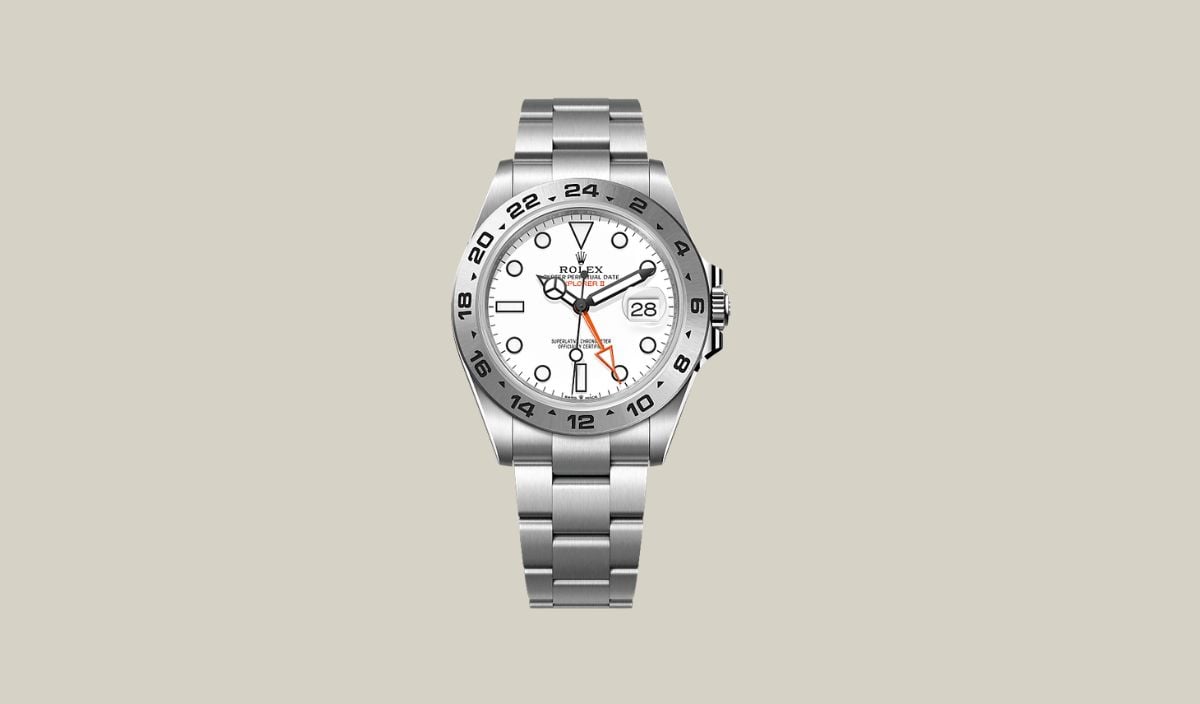
The Rolex Explorer 2 is one of those watches that has a cult following, and for good reason. It’s rugged and instantly recognisable, carrying that unmistakable Rolex DNA.
It was originally designed in 1971 for spelunkers (that’s just a fancy word for cave explorers), with the intention of helping adventurers distinguish between day and night in total darkness. But let’s be real, most people you’ve spotted wearing it have never once set foot in a deep underground cave.
That’s because over the years, the Rolex Explorer II has evolved from a niche tool watch into something much bigger. With its bold 24-hour bezel, independent GMT hand, and no-nonsense steel construction, it’s now a go-to choice for travelers, collectors, and basically anyone who just appreciates a cool, solid timepiece.
But after all these years, is the Rolex Explorer 2 still worth the hype? Is it well and truly a watch deserving of adventuring or is it just another luxury sports watch riding on its own legend?
A Quick History of the Rolex Explorer
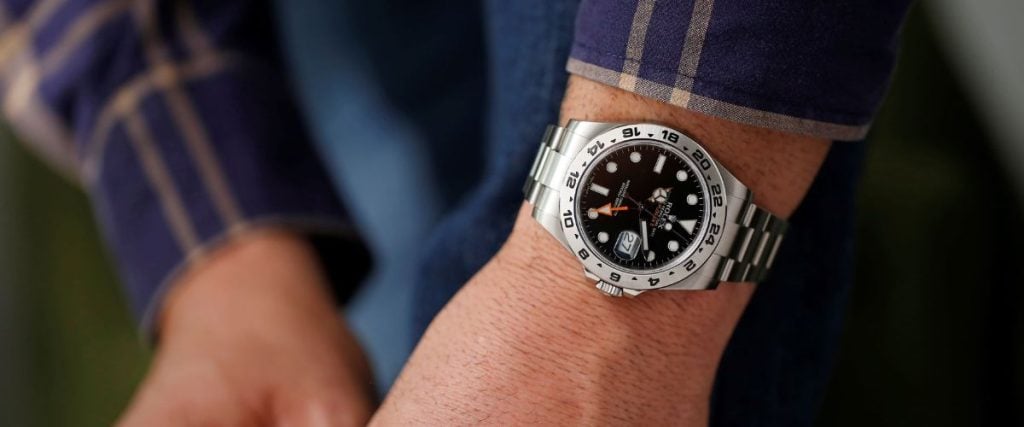
The Rolex Explorer is one of the brand’s most understated models in my opinion. It’s not quite as well known as the Rolex Submariner with its rotating diver’s bezel or the chronograph-equipped Daytona. It’s also not quite as timeless as the Rolex Day-Date.
That’s because it’s built for one thing: adventure. But while it may be one of Rolex’s simplest designs, it carries a history that’s anything but ordinary.
The Rolex Explorer was officially introduced in 1953, the same year Sir Edmund Hillary and Tenzing Norgay became the first climbers to reach the summit of Mount Everest. Rolex had already been testing its watches in extreme conditions, including on previous Everest expeditions, and the Explorer was born from those experiences.
Built for durability, legibility, and reliability, it featured a clean black dial, high-contrast numerals at 3, 6, and 9, and a robust steel case designed to handle whatever the elements threw at it.
Over the years, the Rolex Explorer became the ultimate “go anywhere, do anything” watch. It was simple, reliable, and versatile enough to be worn from the mountains to the boardroom.
The reference 1016, produced from 1960 to 1989, remains one of the most beloved Explorers of all time, known for its timeless design and impressive longevity.
Even as Rolex introduced new variations, including a brief move to a 39mm case in 2010, the Explorer has largely stuck to its roots, staying true to its original purpose as a rugged, no-frills tool watch.
Then, in 1971, Rolex expanded the Explorer lineup with a brand-new model suitably named the Explorer 2. While it shared the same spirit as the original, it was designed for a different kind of adventurer, spelunkers, or cave explorers, who needed a way to distinguish between day and night in total darkness.
The Rolex Explorer II featured a fixed 24-hour bezel and an extra orange-tipped hour hand, originally functioning as an AM/PM indicator. Over time, it evolved to include independent GMT functionality, making it a popular choice for travelers as well.
Today, the Rolex Explorer and Rolex Explorer 2 continue to be staples in the brand’s lineup. They’re not as flashy as a Day-Date or as hyped as a Submariner, but that’s exactly what makes them special.
Built for adventure yet understated enough for everyday wear, they appeal to those who appreciate rugged functionality without the need for excess attention. Now without further ado, let’s get up close and personal with the Rolex Explorer II and see if it truly lives up to its status…
The Case
One of the defining features of the Rolex Explorer II is its robust and no-nonsense case. At 42mm in diameter, it’s on the larger side for a Rolex sports model, but that added wrist presence makes sense given the watch’s tool-watch DNA. It’s built to be legible, durable, and ready for adventure, whether you’re actually exploring caves or just navigating your daily routine.
Crafted from Rolex’s proprietary Oystersteel (a 904L stainless steel alloy), the case is highly corrosion-resistant and maintains its polished sheen even under harsh conditions.
Rolex originally introduced 904L steel in the 1980s, borrowing the material from aerospace and chemical industries where extreme durability is a necessity. In real-world use, that means the Explorer II can handle almost anything, whether it’s saltwater, sweat, or the occasional scrape without losing its luster.
The case follows Rolex’s classic Oyster architecture, which means a monobloc middle case, a screw-down case back, and a screw-down Twinlock crown to ensure a water resistance rating of 100 meters.
That may not be as deep as a Submariner, but for a watch designed primarily for land-based adventure, it’s more than enough. The Twinlock system provides a secure seal against moisture and dust, and unlike the chunkier Triplock crown on the Submariner and GMT-Master II, the Rolex Explorer II’s crown is slightly smaller and more integrated into the case design. The crown guards also follow Rolex’s recent design tweaks, appearing more angled and streamlined compared to previous versions.
Then there’s the bezel which is arguably one of the most recognizable features of the Rolex Explorer 2. Unlike the ceramic bezels found on many modern Rolex sports models, the Explorer II sticks with its traditional brushed stainless steel bezel, engraved with a black-filled 24-hour scale.
Some collectors speculated that Rolex might introduce a ceramic version with some of their newest references, but in keeping with tradition, they wisely stuck to the brushed steel.
On the wrist, the case has a commanding yet balanced feel. The mostly brushed finish gives it a utilitarian appearance, but the polished sides of the case add just the right amount of refinement.
Rolex also adjusted the proportions slightly in recent years by widening the bracelet and slimming the inner edges of the lugs. While these tweaks are subtle, they help improve the overall balance and wearability of the watch, making it feel more proportionate despite its 42mm size.
Topping it all off is a sapphire crystal with Rolex’s signature Cyclops lens over the date. While Rolex historically avoided heavy anti-reflective coatings, recent models feature improved inner-surface coatings to reduce glare and improve legibility.
Combined with the bright, high-contrast dial and large markers, the Rolex Explorer II remains one of the most readable Rolex watches in any lighting condition.
The Dial
Speaking of legibility, the dial of the Rolex Explorer 2 is designed with absolute clarity in mind. Whether you opt for the classic black display or the striking white “Polar” dial, readability is exceptional as you’d expect.
Each dial comes with bold geometric hour markers which include a mix of triangles, circles, and rectangles so legibility is instant. The high-contrast design of the Polar dial is particularly impressive with the stark white background offset by deep matte black markers and hands, a combination rarely seen in Rolex’s lineup.
The black dial version, by contrast, uses polished white gold markers and hands filled with Rolex’s proprietary Chromalight luminescent material, giving it a more traditional but equally effective look.
Another defining feature of the Rolex Explorer 2 is its bold orange GMT hand, a nod to the original 1971 reference 1655. Unlike the modern GMT-Master II, which features a rotating bezel for tracking a second time zone, the Explorer II uses a fixed, 24-hour-engraved steel bezel.
This means the GMT hand is primarily intended as an AM/PM indicator for those operating in environments where day and night distinctions are blurred. That being said, the GMT hand can still be used to track a second time zone, making the Explorer 2 an equally functional travel companion.
Of course, no Rolex sports model would be complete without the brand’s signature Cyclops lens over the date window at 3 o’clock. The magnification makes the date easier to read, once again adding to the dial’s reputation for legibility.
Finally, the dial is completed by some simple lettering for the EXPLORER II logo at 12 o’clock, printed in orange to match the GMT hand, and markings for the Superlative Chronometer certified movement at 6 o’clock.
The Movement
The Rolex Explorer II runs on the caliber 3285, the same movement found in the GMT-Master II. If that sounds like Rolex cutting corners, it’s not. The 3285 is a thoroughly modern movement built to handle both everyday wear and the kind of punishment you’d expect from a watch
designed for explorers. It’s chronometer-certified, accurate to within +2/-2 seconds per day, and packs a 70-hour power reserve which is more than enough to keep ticking through a weekend off the wrist.
Where the Explorer 2 diverges from the GMT-Master II is in how it uses its 24-hour hand. Since the bezel is fixed, this isn’t a watch designed to juggle three time zones at once. Instead, it stays true to its roots by helping the wearer distinguish day from night in environments where the sun isn’t a reliable indicator.
The independently adjustable local hour hand still makes it a useful travel companion, but it’s clear that Rolex intends this watch for those who need a rugged, no-nonsense tool rather than a jet-setter’s accessory.
Functionally, it’s as practical as it gets. The hacking seconds function allows for precise time setting, and the quick-set local hour hand makes adjusting for time zones a breeze.
The date mechanism, which as mentioned is viewed through the Cyclops lens, jumps instantly at midnight, rather than creeping forward. These are small details, but ones that Rolex gets right.
The Strap
The strap for the Rolex Explorer 2 is exactly what you’d expect. It’s a solid three-row link 904L stainless steel Oyster bracelet that is durable, comfortable, and secure.
It comes with a handsome brushed finish that matches the rugged, tool-watch aesthetic of the case. There’s no polished center link here either, just a utilitarian design that feels every bit as refined as it does functional.
The bracelet is secured with Rolex’s Oysterlock folding safety clasp, designed to prevent accidental opening. It’s a small but critical feature, especially for those who intend to put the watch through its paces in unpredictable conditions.
And because comfort is just as important as security, Rolex has included the Easylink extension system, allowing for a quick 5mm adjustment without the need for tools.
The integration between case and bracelet is seamless, with solid end links that flow perfectly into the lugs. Rolex has never been one to cut corners when it comes to their bracelets, and it shows here; the brushed surfaces are crisp, the taper of the bracelet feels just right, and the overall balance on the wrist is impeccable.
And while the Oyster bracelet is undoubtedly the perfect match for the Explorer 2, Rolex has given you options. With a 21mm lug width, you could swap in a rubber or leather strap if you really wanted to, but honestly, it’s hard to imagine anything looking better than the bracelet it comes with.
On-Wrist Experience
The Rolex Explorer 2 has never been a delicate watch and the models in the current collection carry that tradition forward. At 42mm in diameter and 12.5mm thick, it has a definite presence on the wrist. It’s substantial enough to feel like a proper tool watch, but not so bulky that it
becomes cumbersome. It won’t disappear under a fitted shirt cuff, but it’s still comfortable enough for all-day wear.
Thanks to the updated case proportions and subtly refined bracelet that came with the 2021 Explorer II, the watch feels well-balanced, with the weight evenly distributed across the wrist.
The fully brushed Oyster bracelet keeps things secure without sacrificing comfort, and the Easylink extension ensures a perfect fit no matter the situation.
If you have a wrist in the 6.5 to 7.5 inch range, the 42mm case will wear well, sitting broad but not overwhelming. On smaller wrists, it will lean further into its tool-watch identity, offering that decisive, adventure-ready aesthetic with an oversized look, but one that looks purposeful.
Price & Availability
The Rolex Explorer 2 holds a prominent position in the luxury watch market and that’s mirrored in its pricing and availability. As of March 2025, the retail price for a new Explorer II stands at around $9,750. However, due to high demand and limited availability, getting one isn’t easy.
There are a lot of long waiting lists with authorised retailers, and any retailer online suggesting they have them in stock probably deserves a second look.
Because of their current allusivity, Rolex Explorer 2 watches have increased prices on the pre-owned market. Of course, prices vary depending on the condition, age and provenance, but from looking, most models are selling for around $10,000 to $12,800.
If you are going to purchase pre-owned, just be sure you’re choosing a reputable retailer like Exquisite Timepieces. We ensure all of our pre-owned Rolex watches are genuine and we’ll ensure your model comes with the box, papers and official warranty.
Conclusion
If you were to ask me, then yes, the Rolex Explorer 2 more than lives up to its reputation. Sure, it’s a luxury sports watch but it’s equally a rugged, adventure-ready timepiece with real functionality and a history to back it up. It’s clearly built to withstand the elements but also maintains Rolex’s classic design language and drive for precision.
And while it might not be as popular as the Submariner or Daytona, it’s still a staple for those who appreciate durability, reliability, and understated style.
It’s mainly a watch for people who need more than just aesthetics. Travelers will benefit from the independent GMT function, collectors will appreciate its heritage, and those who prefer a no-nonsense tool watch will find it a perfect fit.
With its 42mm case and well-balanced proportions, it offers wrist presence without unnecessary bulk, making it suitable for both rugged environments and daily wear.
Availability can be a challenge, but let’s be honest, that just adds to the Explorer 2’s appeal. Demand often exceeds supply, so that keeps both retail and pre-owned prices strong so if you’re looking at a Rolex as an investment, it might be a smart choice.
All in all, the Rolex Explorer 2 is a watch that delivers where it matters. It’s tough enough to handle real-world adventures, refined enough for everyday wear, and built with the level of craftsmanship that has made Rolex a household name.









